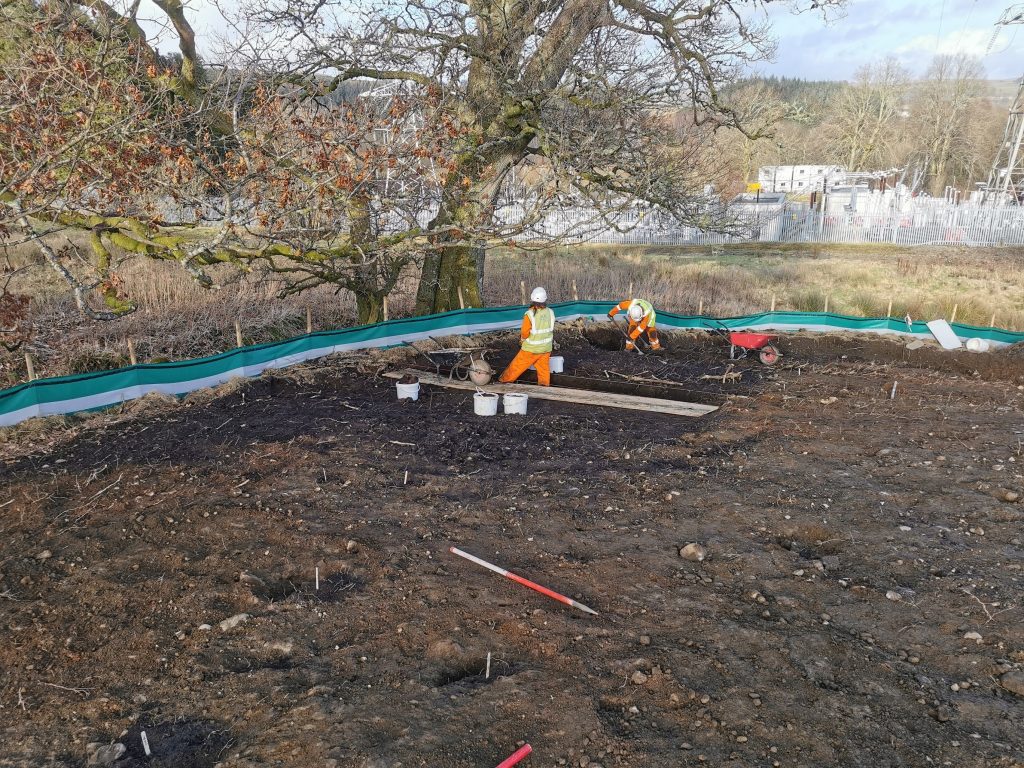The next event in the ‘Hidden Culture’ programme will hear directly from archaeologists about two recently excavated metal working sites within the Galloway Glens area: Glenlee and Balmaghie. Why was iron worked here, how do we know and what was it used for?
Both sites have undergone recent excavation and their metalworking history has the potential to date back to medieval times. Lindsey Stirling from AOC Archaeology will be talking about the site at Glenlee and and Louise Turner from Rathmell Archaeology will shed light on the work at Balmaghie. We’ll be discussing finds at both sites and what they tell us about Galloway’s past.
To book your free ticket for the online event (delivered through ‘Zoom’), click here: https://www.eventbrite.co.uk/e/when-the-sparks-fly-two-iron-working-sites-around-loch-ken-tickets-254843863857.
This event is part of the ‘Can You Dig It’ project, overseen by Rathmell Archaeology. Claire Williamson, Senior Archaeologist at Rathmell Archaeology said:
“We’re very much looking forward to having Lindsey and Louise talk us through the recent discoveries of two metal-working sites within the Galloway Glens area, looking at how the sites were excavated, what they discovered and what happens to the artefacts now that the fieldwork is done. With the potential to date back to the medieval period, Lindsey and Louise will explain how iron was worked all those centuries ago and what objects they might have been making!”
At Balmaghie, we’re dealing with a feature packed with metalworking slags which pre-dates the field drains, so therefore it is likely to be post-medieval or potentially medieval in date. Louise will describe recent excavations at Balmaghie have revealed a large deposit of metallurgical slags dumped in cut feature that predated modern field drains. Any casual observer who took a look at this material would shrug and move along, because metallurgical slags don’t look like much. They’re the poor relations in the finds world – no more than grotty lumps of industrial dross. But this material is far from useless to the archaeologist. Its detailed study can yield valuable insights into historical methods of transforming ores into the metals which perform such a crucial role in our lives. At Balmaghie, the quantities recovered from one small trench were sufficient to indicate that the primary processing of iron must have taken place here.
Louise Turner from Rathmell Archaeology explains;
“With a melting point of 1538 degrees Centigrade, the production of iron was particularly challenging. Only by heating iron ore in a furnace could sufficient temperatures be reached to allow it to be tapped out as a liquid from its base. Much of the time, right up until the post-medieval period, the metal was produced instead through heating on a hearth until it reached a malleable state. It was then hammered out to remove the impurities, a very long and physically demanding process.”
It is often very difficult to identify actual metalworking sites because their traces are quite ephemeral and prone to erosion and loss. But the slags which derived from the impurities present in the ore are very durable, and their detailed study can yield insights into the production process. By looking at slags, we can determine whether smelting or smithing took place, and we can pinpoint the actual location of working through the survival of minute particles of hammerscale and slag spheres, produced when the sparks fly off in the metalworking process.
Galloway Glens Education & Community Engagement Officer, Jan Hogarth, added:
“I can’t wait to find out more about these fascinating investigations which allow us to re-imagine the past and how the resources from our Galloway Glens Landscape were used. I hope you can join us to gain a better understanding of what activities took place at Balmaghie and Glenlee and the material that archaeologists are studying today that informs this knowledge.”





